24 Sep 09/24/2021
A Break Down of Blue Light Glasses
Since the 17th century, physicist Isaac Newton's contributions to science have been seen across all walks of life. He discovered calculus, developed the foundational principles for physics, and identified new theories for color and light. It's this last part that hits home with our topic today.
Through his experiments with sunlight and prisms, Newton found that white light is composed of colors. Before his discovery, it was believed that pure white light was contaminated by matter to yield color. Instead, the world's colors are not shown by light but derive from light itself. Newton identified the ROYGBIV colors — red, orange, yellow, green, blue, indigo, and violet — within white light, and these colors make up the visible light spectrum. Today we know that different colors of light can affect our eyes differently. The blue color Newton identified during his work is one of the colors that can harm your eyes with extended exposure and is one of the colors workers need to protect against.
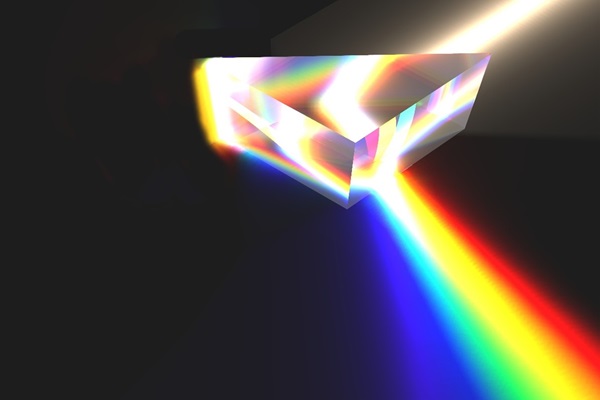
"Plato is my friend – Aristotle is my friend – but my greatest friend is truth." Isaac Newton
Blue light exposure has increased for almost everyone in the 21st century with the advent of technologies like TV, computers, and digital devices. The amount of time people spend on their phones and tablets, or staring at a computer or TV screen, has dramatically increased over the past few decades. Some studies suggest that adults spend roughly six hours a day using electronics, and teens spend closer to around seven hours. That may be an underestimation, especially during the recent pandemic, when people have been cooped up indoors and online even more. All of this is to say that our exposure to blue light has increased substantially in recent years.
This article aims to provide a broad overview of the visible light spectrum, with a significant emphasis on blue light and blue light blocking safety glasses.
Visible Light Spectrum
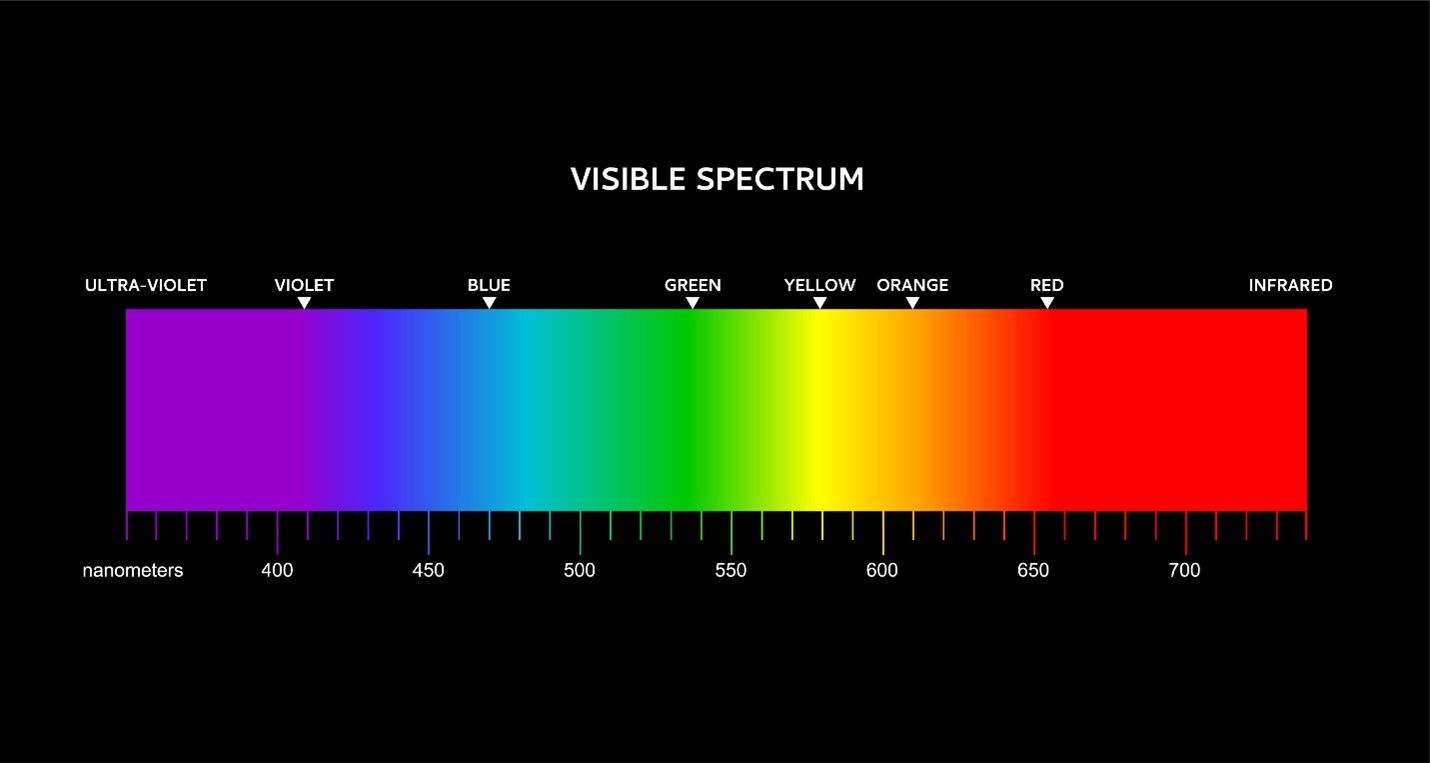
What is the visible light spectrum? As Newton determined, white light can be separated into distinct color bands that refract at different angles depending on the color's wavelength. Visible light includes light rays consisting of electromagnetic particles traveling in wavelengths that range from 380 to 700 nanometers. In layman's terms, the visible light spectrum is the portion of the electromagnetic spectrum that the human eye can see.
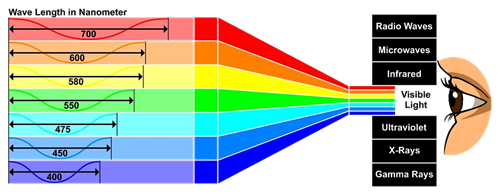
The visible light spectrum colors are red, orange, yellow, green, blue, indigo, and violet.
Light is emitted as a spectrum, and each color corresponds to a particular wavelength of light. The energy emitted from each wavelength shows up as different colors and ranges in length and strength, which can become problematic for vision. On the high wavelength side, red produces the lowest energy and is the least harmful to our eyes. However, on the low end of the spectrum, blue light produces the highest energy and is much more damaging to our eyes with prolonged exposure. To help envision the energy of these different colored wavelengths, consider a blowtorch. A blowtorch's flame changes from red to blue as the flame gets hotter. The same principle is at work in light: as the amount of energy increases and wavelengths grow shorter across the visible spectrum, the "temperature" increases, and we move from red to blue.
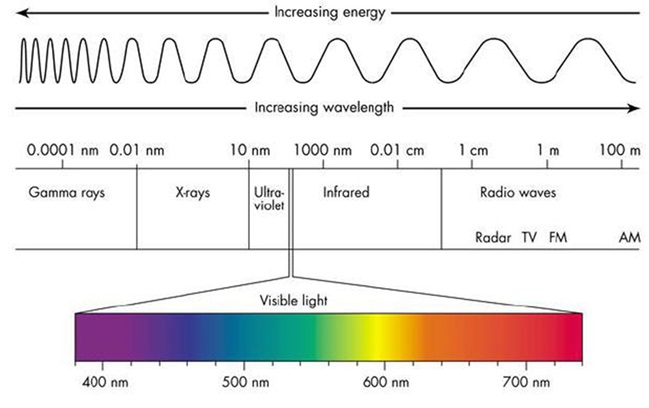
Visible light spectrum wavelengths: when all the visible light waves are seen together, they create white light.
Blue Light
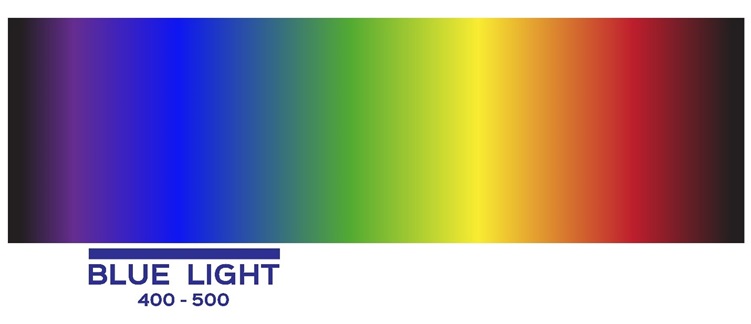
What is blue light? Blue light is the section of the visible light spectrum with the shortest wavelengths and a high degree of energy. The blue light wavelengths range from 380nm to 500nm, and blue light represents roughly one-third of all visible light. Blue light is further broken down into three additional categories:
- Violet light – approximately 380-410 nm
- Blue-violet light – approximately 410-455 nm
- Blue-turquoise light – approximately 455-500 nm
Visible light can be seen because our eyes have unique cells called cones that are located in the retina. These cells act as receivers tuned to the wavelengths of the visible light spectrum, and, in turn, our brains register a particular color. Violet and blue-violet light are the most concerning types of blue light because they both produce higher amounts of energy, and that energy can damage the retina, sometimes permanently.
Electronic Devices

While we might like to blame blue light exposure on screens, blue light is all around us every day. Most of our blue light exposure comes from the sun. It's what makes our sky look blue! However, many artificial sources produce blue light, and it's our interactions with those other sources that increase our exposure and our risk of eye damage. Examples of these artificial blue light sources include:
- Cell phones
- Computers
- Smartphones
- Fluorescent and LED lights
- Game systems
- Handheld devices
- RF scanners
- Portable devices and electronics
- Tablets
- TVs
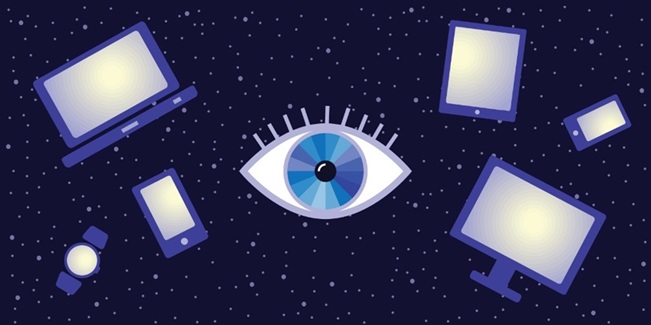
Artificial blue light is advantageous for users as it helps with the screen's legibility.
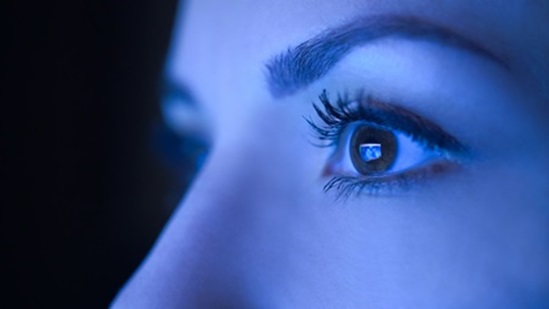
100% of blue light reaches the retina.
While fluorescent and LED lighting can be better both for the environment and for electric bills, as they use considerably less energy than incandescent bulbs, most people don't consider the inherent danger of blue light exposure from their use. There are multiple adverse effects that overexposure to blue light can have on people, including eye strain, glare or hazy vision, mental fatigue, migraines, disrupted sleep patterns, and headaches. Blue light also decreases our low-light vision, leaving people more susceptible to accidents when working indoors.
What are blue light glasses?
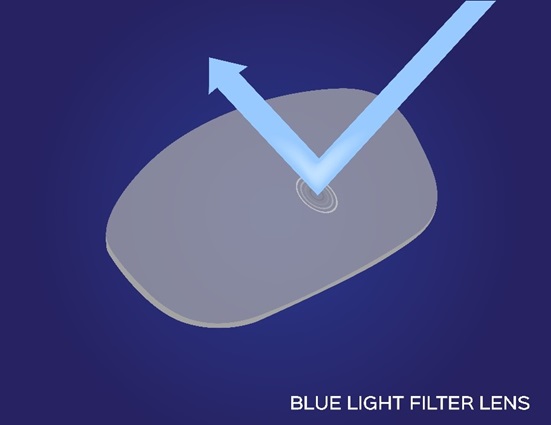
Some individuals have tried to address blue light exposure and protect their eyes by wearing amber or yellow-tinted glasses, as amber blocks out a broad range of blue light. However, this approach severely affects color recognition, leaving those who rely on color-coding to maintain a safe environment in a lurch.
Blue light glasses are a better, safer answer to the problem as they are equipped with a special protective coating that blocks much of the blue light emitted from electronic devices. This reduction in light helps reduce eye strain and maintain color perception, providing a more comfortable viewing experience overall. Various names recognize this form of protective eyewear; some call these glasses blue light blocking, and others call them blue blockers.
Do blue light glasses work?
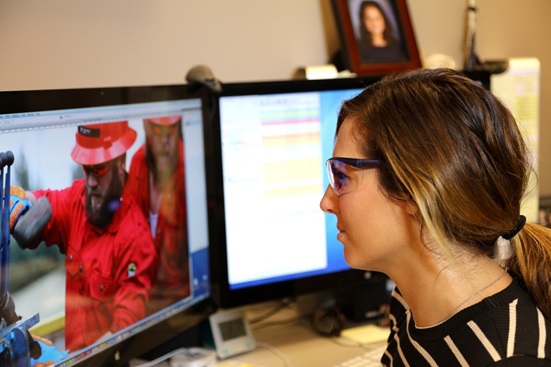
There have been several recent studies performed to measure and assess the dangers of blue light exposure on people. Research from the American Academy of Ophthalmology has shown that blue light originating from digital devices and causing minor eye strain doesn't lead to long-term eye disease. However, other studies have shown overexposure can lead to macular degeneration.
Research on the long-term effects of blue light exposure is ongoing; however, that doesn't mean that those who spend a lot of time using digital devices can't find benefits from wearing a pair of tinted glasses. Here are the most common benefits associated with wearing a blue light tint:
- Helps with memory
- Elevates mood
- Increases alertness
- Minimizes headaches
- Reduces eye fatigue
- Offers relaxed vision
Protection - Safety Glasses
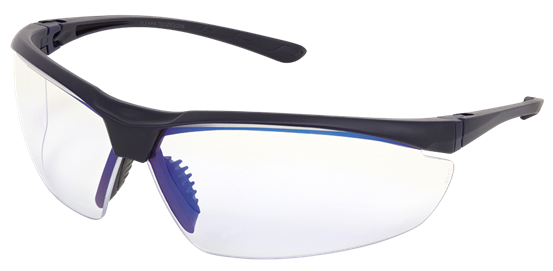
MCR Safety's VL210MB blue light blocking glasses feature MAXBLUE™ technology to protect against blue light. MAXBLUE™ lenses provide an individual with a clear, faintly mirrored lens without any color distortion. These state-of-the-art MAXBLUE™ lenses filter out 41% of blue light and eliminate many symptoms when exposed to blue light.
Here are the core features of the VL210MB:
- TPR nosepiece: Provides added comfort
- 3-point ratcheting temple: Offers an optimal fit
- Athletic inspired design:Gives a stylish look
The VL210MB is also lightweight and comfortable, so much so that you may forget you are even wearing these glasses. Another benefit to purchasing safety glasses with blue light filtering rather than standard eyewear is that you'll often find price savings!
Blue light safety glasses are ideal for those who spend extended periods exposed to blue light. A good example is when office workers spend much of their day looking at a computer screen and then transition to an industrial environment like construction or a manufacturing plant. When this happens, individuals are vulnerable if they accidentally forget to take off non-ANSI-rated glasses. Those who work in laboratories or healthcare settings like hospitals and doctors' offices are also exposed to a lot of blue light.
Safety glasses that block blue light can be called a multitude of names. Examples you will often hear are:
- Blue light protection glasses.
- Blue light blocking safety glasses.
- Blue light filtering safety glasses.
Common Questions

Is blue light bad?
- There is continued research taking place on the long-term effects of blue light. At a minimum, extended exposure to blue light can cause eye strain and vision-related problems, but how long-lasting the effects might be is still being studied.
Are blue light glasses worth it?
- They are 100% worth it if you are one of the individuals working around electronics for multiple hours a day and experiencing any of the side effects identified above.
How does blue light affect sleep?
- Overexposure to blue light can throw off your circadian rhythm and disrupt your natural sleep patterns.
Do TVs emit blue light?
- Yes, flat-screen LED televisions emit a great deal of blue light.
What is the order of the visible light spectrum?
- You only have to remember the term "Roy G Biv", which stands for red, orange, yellow, green, blue, indigo, and violet.
What is the electromagnetic spectrum visible light?
- Visible light waves are one of seven types of waves found in the electromagnetic spectrum (EM), including the categories making up EM radiation. Visible light is only one part of the electromagnetic spectrum, including radio waves, microwaves, infrared radiation, ultraviolet radiation, x rays, and gamma rays.
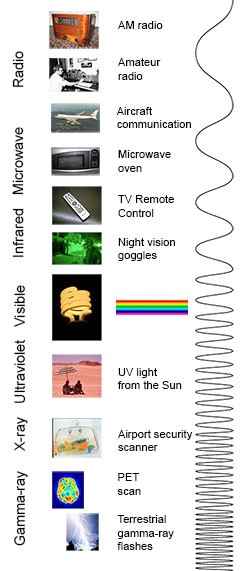
The Electromagnetic Spectrum and Its Waves
How to protect eyes from blue light?
- You know we're going to say that the best solution is to purchase yourself a pair of glasses that filters out blue light. But there are other ways to protect against blue light exposure, including purchasing fluorescent light filters and blue light blocking screen protectors.
Protecting Eyes with the Best Technology
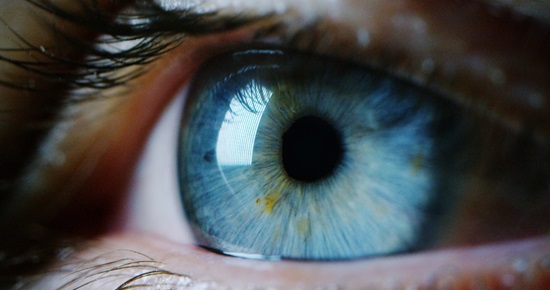
Digital TVs, cell phones, and gaming systems were not around during the days of Isaac Newton. However, the blue light Newton isolated and identified is more prevalent today than ever before. The amount of time we spend using devices that emit blue light continues to increase, and that doesn't look to be changing anytime soon.
Don't let digital eye strain give you the blues. If you need to wear safety glasses and work around electronic equipment, our MAXBLUE™ lens technology will help keep your eyes safe and protected from on-the-job hazards, including blue light.
Click the below image to leave us comments, questions, or any concerns.
For over 45 years, MCR Safety has proven to be a world leader in gloves, glasses, and garments. Whether it's using your phone, working at your computer, or at a manufacturing plant, we are there providing solutions to workplace hazards. It's all part of our commitment to protect people.
No matter your industry, we have the personal protective equipment you need.

Learn more about MCR Safety by checking out our most recent video. For more information, browse our website, request a catalog, find a distributor, or give us a call at 800-955-6887.
About the Author
Latest Articles






